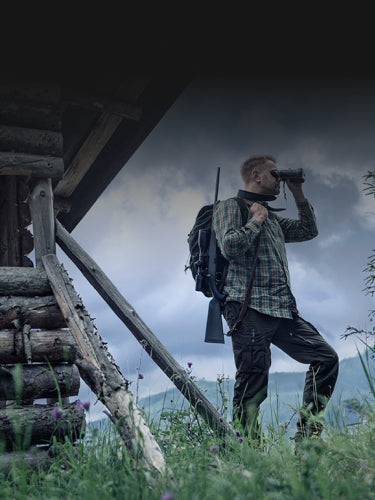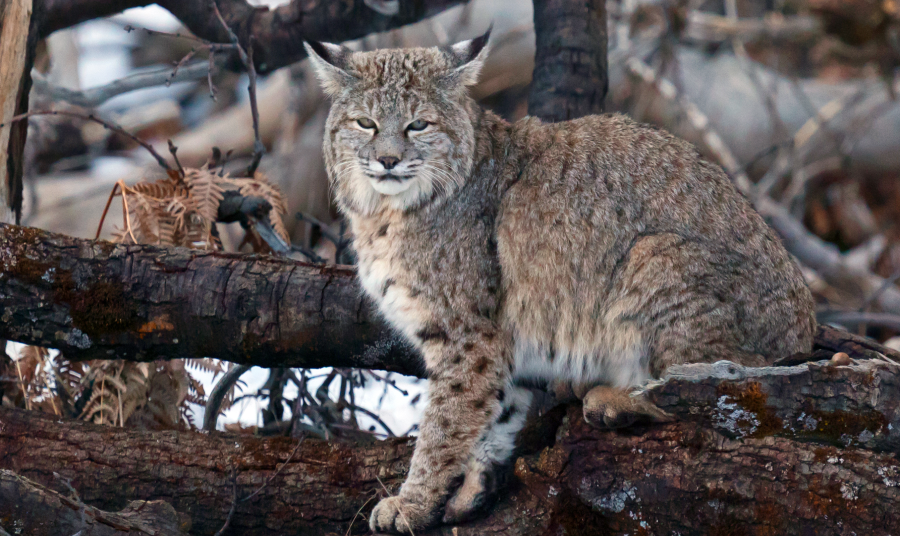If you’ve ever tried your hand at predator hunting, you know that the bobcat is one of the craftiest creatures in the wild. Stalking them requires a hunter to have patience, skill, and the right gear—and few know this better than Ethan Nichols. A seasoned bobcat hunter with 18 years of experience under his belt and 6 of those spent hunting with thermal, Ethan has spent countless nights navigating the rugged terrains of Texas and Southwestern Oklahoma, armed with his trusty rifle and high-tech thermal optics from Pulsar.
With their keen senses and elusive nature, bobcats can make even the most experienced hunters question their strategies. So, what’s the secret sauce to consistently bagging these stealthy predators? We sat down with Ethan to talk about his approach, his gear, and what keeps him coming back for more.
Pulsar Blogger: For the non-hunters out there, why do we hunt bobcats?
Ethan Nichols: Bobcats are predators that can wreak havoc on local wildlife and livestock. They’ll take down deer, sheep, goats, calves, poultry, and waterfowl. They’re notorious for climbing into roosts to kill turkeys. Hunting helps manage their population and protect the balance of local ecosystems.
PB: What are your favorite calling techniques for attracting bobcats, and when do you use them most effectively?
EN: If I tell you, I’ll have to kill you... Just kidding! Cottontail in distress and bird in distress calls work wonders. I find they’re especially effective when bobcats are in hunting mode, usually during the early morning or late evening when they’re most active.
How do you choose the best stand locations?
EN: I've always had the best luck setting up in heavily brushed areas with plenty of cover—think dense trees, bushes, and tall grass. Bobcats love to sneak through these types of environments, so placing your stand in or near thick cover is crucial.
What accessories (e.g., tripods, night vision binoculars) do you find essential for thermal bobcat hunting?
EN: My go-to optics are the Thermion 2 LRF XL50 and the Merger LRF XL50. For stability, I use a FatBoy Elevate Two Section Tripod with either the FatBoy Levitate Level Head or the Invert 60 Ball Head. And for calls, you can’t beat the Lucky Duck Super Revolt—it’s loud, clear, and versatile.
What measures do you take to minimize human scent and avoid spooking bobcats?
EN: Surprisingly, I’ve never had problems with bobcats picking up human scent like I have with coyotes. Coyotes are smart and often work the wind when approaching, but bobcats are more direct—they’ll usually go straight to the call, wind direction be damned.
What are the typical behaviors and patterns of bobcats that hunters should be aware of?
EN: Bobcats are masters of stealth and patience. They’re elusive, often moving slowly and using cover to stay hidden. My advice? Be even more patient than they are. They might test your nerves by hanging back, but persistence pays off.
Can you share a memorable experience from your thermal bobcat hunting adventures?
EN: One morning, I set up my call on a berm that echoed into a creek line. I played a light rabbit-in-distress call for about five minutes. Suddenly, a bobcat appeared, silently stalking from the other side of the berm where I couldn’t see it until it jumped right on top of the call. I took the shot, and the bullet not only dropped the bobcat but also went through the handle of my call.
What are the biggest challenges you've faced while hunting bobcats with thermal technology, and how have you overcome them?
EN: Bobcats often hesitate on the edges of tree lines or brush, reluctant to fully commit to the call. I’ve found that switching up the calls every 45 seconds to a minute helps break their hesitation. Changing sounds keeps their attention and seems to convince them to make that final approach.
What advice would you give to someone who is new to thermal bobcat hunting?
EN: Don’t shy away from thick, brushy areas—that’s where the bobcats love to be. And above all, be patient. It’s a waiting game, but the payoff is worth it when you finally catch sight of them creeping in.
Bobcat hunting boils down to understanding the animal’s behavior, mastering your gear, and knowing when to wait and when to act. Ethan Nichols’ experience with thermal optics and his deep knowledge of bobcat habits highlight the importance of adapting your strategy in real-time. For those new to the game, the advice is clear: don’t be afraid of thick cover, switch up your calls, and above all, stay patient.
Hunting bobcats might test your resolve, but the thrill of outsmarting one of nature’s most cunning predators is worth every second. So gear up, find your perfect stand, and let the call of the wild guide you to your next great hunting adventure.
To shop the Thermion 2 series of riflescopes, click here.
To shop the Merger series of binoculars, click here.
If our products have helped you in any way, share your story with us! Accepted stories will receive a 20% discount code.





